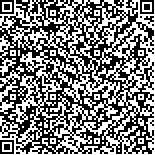吕欣,曹宇,周达岸.体外冲击波通过调控IGF-1和p-AKT水平促进大鼠骨骼肌损伤的修复[J].中华物理医学与康复杂志,2022,44(4):300-305
扫码阅读全文

|
| 体外冲击波通过调控IGF-1和p-AKT水平促进大鼠骨骼肌损伤的修复 |
|
| |
| DOI:10.3760/cma.j.issn.0254-1424.2022.04.003 |
| 中文关键词: 骨骼肌损伤 体外冲击波治疗 胰岛素样生长因子 蛋白激酶 |
| 英文关键词: Muscle injury Extracorporeal shock wave therapy Insulin-like growth factor Protein kinase |
| 基金项目:辽宁省自然科学基金项目(20180551081) |
|
| 摘要点击次数: 5382 |
| 全文下载次数: 5531 |
| 中文摘要: |
| 目的 探讨体外冲击波通过调控胰岛素样生长因子(IGF)-1和磷酸化蛋白激酶B(p-AKT)的水平促进大鼠骨骼肌钝挫伤后修复的可能作用机制。 方法 按随机数字表法将66只雄性成年SD大鼠分为正常组、模型组和治疗组,自制重物打击装置进行骨骼肌钝挫伤造模。正常组大鼠不作任何处理;模型组大鼠造模后不行体外冲击波治疗;治疗组大鼠于造模后24 h采用体外冲击波治疗,设定体外冲击波刺激能流密度0.14 mJ/mm2,频率10 Hz,冲击500次,间隔4 d后再次体外冲击波治疗。分别于造模后1、3、5、7 d,对各组大鼠腓肠肌进行取材。采用HE染色观察肌纤维排列情况,采用免疫组化及免疫印迹(western blot)检测和分析肌肉生长抑制素(Myostatin)、成肌分化抗原(MyoD)1、IGF-1、p-AKTs473的蛋白表达情况。 结果 ①HE染色显示,模型组较正常组肌细胞排列间隙增大,治疗组可见较多新生单核或多核肌管;相同时间点比较,治疗组骨骼肌再生修复作用均优于模型组;②免疫组化显示,与正常组相比,模型组各时间点的Myostatin表达量均明显增加(P<0.05),且治疗组较模型组的表达均有明显下降(P<0.05),至7 d时治疗组与正常组的组间差异无统计学意义(P>0.05);③免疫印迹检测,模型组在第1天和第3天时的MyoD1表达明显高于同时间点的正常组(P<0.01),治疗组各时间点的表达亦明显高于模型组(P<0.01);模型组的IGF-1和p-AKTs473的表达均高于同时间点的正常组(P<0.05),且治疗组的表达量较模型组显著增加(P<0.01)。 结论 体外冲击波可能通过调控IGF-1及p-AKT水平促进骨骼肌损伤的再生修复。 |
| 英文摘要: |
| Objective To determine whether or not shock wave therapy promotes the repair of muscle injury by regulating insulin-like growth factor-1 (IGF-1) and/or the phosphorylation of protein kinase B (p-Akt). Methods Sixty-six adult male Sprague-Dawley rats were randomly divided into a normal group, a model group and a treatment group. A custom-made striker was used to induce blunt contusion in the gastrocnemius muscles of the rats of the model and treatment groups. The normal and model groups were then not given any therapeutic intervention. Twenty-four hours later, the treatment group underwent 500-impulse shockwave treatment at 0.14mJ/mm2 and 10Hz. That was repeated 4 days later. The injured muscle was sampled on the 1st, 3rd, 5th, and 7th day after modeling. Hematoxylin and eosin staining was applied to observe the arrangement of muscle fibers, and the expressions of myostatin, myogenic differentiation antigen 1 (MYOD1), IGF-1 and p-AKTs473 were detected by immunohistochemistry and western blotting. Results (1) The staining showed that in the model group the space between the muscle cells was larger than in the normal group. In the treatment group there were more newly-formed mononuclear or multinucleated muscle tubes. The regeneration of skeletal muscle in the treatment group was superior to that in the model group at the same time points. (2) The average myostatin expression of the model group increased significantly compared with the normal group at all the time points, while that of the treatment group had decreased significantly compared with the model group. Moreover, no significant differences were found on the 7th day between the treatment and normal groups. (3) Western blotting showed that the expression of MyoD1 in the model group was significantly higher than that in the normal group on days 1 and 3, and the expression of MyoD1 in the treatment group was significantly higher than in the model group. The expression levels of IGF-1 and P-AKTS473 in the model group were higher than those in the normal group at the same time point, and the expression levels in the treatment group were significantly higher than those in the model group. Conclusion Extracorporeal shock wave therapy can promote the regeneration and repair of skeletal muscle by regulating IGF-1 and p-AKT levels. |
|
查看全文
查看/发表评论 下载PDF阅读器 |
| 关闭 |
|
|
|